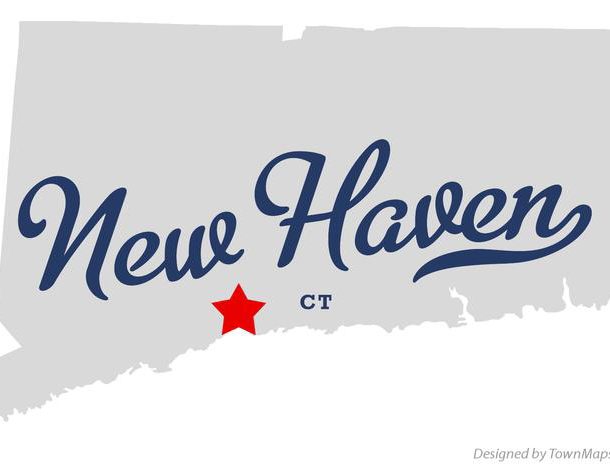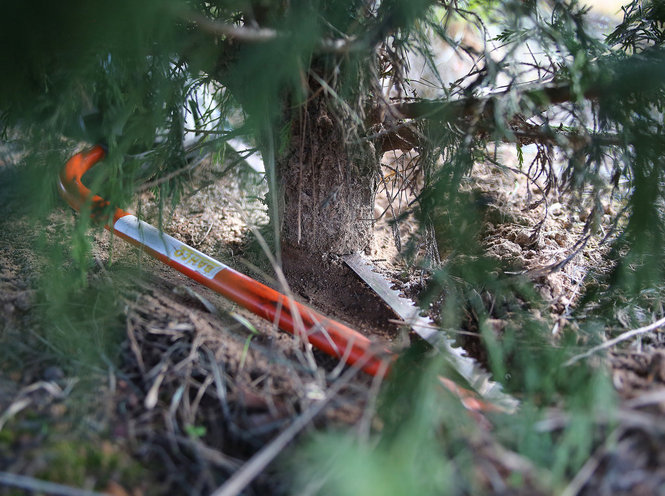
O Christmas Tree! O Christmas Tree!
To some, Christmas just isn’t Christmas without a “real” Christmas tree. For a truly special experience this holiday season why not plan a memorable outing to one of our local tree farms to cut your very own tree? Did you know there are several reliable tree farms right here in New Haven County?
Don’t forget to do your homework before you go tree shopping. Measure the height and width of the space where you plan to place it. This will prevent you from making a serious mistake, and will help guide you in your selection. If the tree is displayed in front of a large window, then all four sides should look as good as possible. If the tree is displayed against a wall, then a tree with three good sides would be okay. A tree with two good sides works well in a corner. The more perfect a tree, the more expensive it is. Also, make sure the handle or base of the tree is straight and 6-8 inches long so it will fit easily into the stand.
Some tips for your family’s visit to a local Christmas tree farm;
Saws are usually provided by the farm operator.
Most tree farms keep their fields very well groomed, but there are some things that are beyond the farmer’s control. Be careful of fire-ant mounds, tree stumps, an occasional blackberry vine, uneven ground and sharp saws.
Go to the farm prepared for a day in the country. Wear comfortable shoes and old clothes. Bring rain gear if the weather is threatening. The “cutter downers” and the “loader uppers” should also have gloves. Don’t forget the camera. It’s best to leave “Rover” at home (many farms will prohibit pets). But, if a pet is allowed, keep him on a leash at all times to prevent him from “marking” other people’s trees.
Some farms measure and price their trees individually; others sell them by the foot. Ask about the established pricing policy before heading out in the field to select the tree that fits your predetermined needs. Check the trunk to be sure it is sufficiently straight. Keep in mind that pines will usually have some crook in their trunks.
During the fall season, as a normal part of the life cycle of a tree, pines drop, or shed, a certain portion of their oldest needles. Most farms provide shaking or blowing services so that you will leave with a perfectly clean pine to take home.
Cutting the tree is easiest as a two-person project. The “cutter downer” usually lies on the ground while the helper holds the bottom limbs up. While the cut is being made, the helper should tug on the tree lightly to ensure that the saw kerf remains open so that the saw does not bind. The tugging force should be applied to the side of the tree opposite the cut. A back cut should be made first with the final cut coming from the opposite side.
Bring the tree to the processing area where it will be cleaned and netted. Netting makes transporting and handling the tree substantially easier.
When you are checking out, remember to pick up a tree removal bag if available. It can be used as a tree skirt and then pulled up around the tree to help keep the floors clean when the tree is being taken down.
Now that you and your family have chosen that perfect tree it’s time to bring it home and decorate it. After tying it to the roof of your car (don’t forget to bring strong cord) cover your tree with a tarp or plastic for the trip home to keep it from drying out.
Buying your Christmas tree at an established tree farm is the preferred option for freshness and longevity. Trees sold on retail lots in urban areas may have come from out of state and may have been exposed to drying winds in transit. They may have been cut weeks earlier. If you prefer to go this route make sure to go early before the best trees have been sold, and don’t be shy about asking the retailer whether his trees are delivered once at the beginning of the season or if they’re delivered at different times during the selling season.
To check for freshness, a tree should have a healthy green appearance with few browning needles. Needles should be flexible and not fall off if you run a branch through your hand. Raise the tree a few inches off the ground and drop it on the butt end. Very few green needles should drop off the tree, although it is normal for a few inner brown needles to drop off.
ABOUT THE UNION
RENT AT THE UNION
Live higher. Make your home at The Union, New Haven’s landmark luxury apartment building, and enjoy the very best of the city — right at your doorstep.






